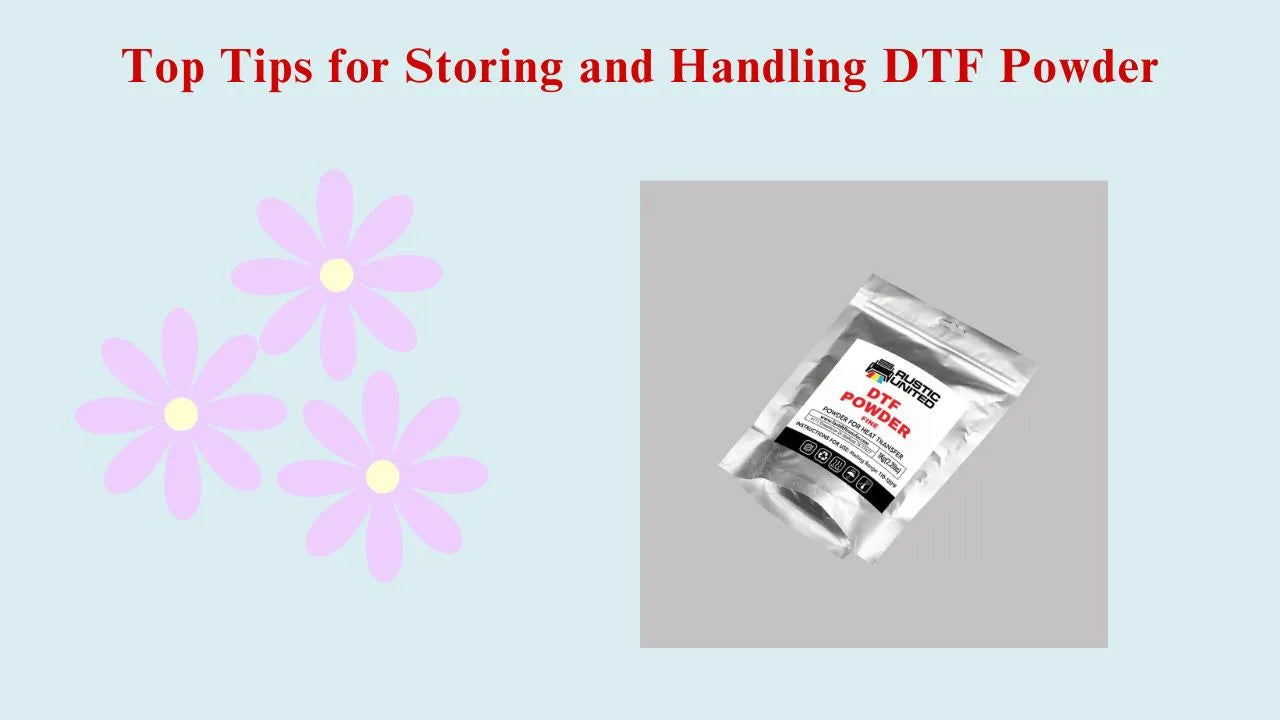
Top Tips for Storing and Handling DTF Powder
Top Tips for Storing and Handling DTF Powder
Direct-to-Film (DTF) printing has revolutionized custom apparel and textile printing by providing vibrant, durable, and versatile designs. One of the critical elements in achieving consistent, high-quality results is proper management of DTF powder. Mishandling or improper storage can lead to clumping, uneven application, or decreased adhesion, negatively affecting final prints. This guide covers essential tips for storing and handling DTF powder to ensure long-lasting, professional results for every project.
Why Proper Storage Matters
DTF powder is sensitive to moisture, heat, and dust. Exposure to any of these elements can compromise its performance. Moisture can cause clumping, which makes the powder difficult to apply evenly. Heat can alter the melting characteristics of the powder, affecting how it adheres to the film and fabric. Dust or contaminants can lead to unwanted spots or imperfections in the final print. Therefore, storing DTF powder correctly is the first step toward reliable and consistent printing results.
Choosing the Right Storage Environment
For optimal performance, DTF powder should be kept in a cool, dry environment with low humidity. Avoid storing the powder near heat sources such as heaters, sunlight, or industrial equipment. Ideal storage temperature typically ranges between 18°C to 25°C (65°F to 77°F). Additionally, humidity levels should be kept below 50% to prevent moisture absorption. Using airtight containers or resealable bags can protect powder from environmental factors and extend its shelf life.
Handling DTF Powder Safely
Handling DTF powder requires care and attention to prevent contamination and waste. Always use clean, dry tools when scooping or transferring powder. Avoid touching the powder with bare hands, as oils and moisture can affect its consistency. Consider using gloves and a mask to prevent inhalation or skin contact, particularly in large-scale production environments. Minimizing direct contact and exposure ensures the powder remains free-flowing and maintains its intended adhesion properties.
Preventing Cross-Contamination
Cross-contamination can occur when different powder colors or batches mix unintentionally. To avoid this, dedicate separate containers, scoops, and work areas for each color. Label all containers clearly to prevent confusion, and maintain a clean, organized workspace. Even a small amount of foreign powder can alter color intensity or create uneven transfers. Implementing consistent handling procedures helps maintain predictable, professional results and reduces waste from misprints.
Measuring and Applying Powder Accurately
Accurate measurement of DTF powder is essential for even coating and successful adhesion. Use calibrated scoops or automated powder applicators for consistent results. Over-application can lead to excessive residue and uneven melting, while under-application may cause weak adhesion to the fabric. By maintaining a consistent application method, operators can produce vibrant, long-lasting prints with minimal trial and error.
Maintaining Powder Quality Over Time
Even under ideal storage conditions, DTF powder can degrade over extended periods. To maintain quality, use older powder first to prevent long-term storage issues. Periodically check for clumping or discoloration, which may indicate exposure to moisture or other environmental factors. If clumping occurs, gently break up the powder before use, but avoid excessive handling that could introduce contaminants. Regular inventory rotation ensures that the powder used in production is fresh and reliable.
Transporting DTF Powder
When transporting powder between facilities or workstations, use secure, sealed containers to prevent spillage and moisture exposure. Avoid placing containers in areas where they might be exposed to sunlight, heat, or excessive movement. For larger shipments, consider insulated packaging and moisture absorbers to maintain stable conditions during transit. Proper transport practices help preserve the powder’s quality and prevent unnecessary waste.
Tips for Reducing Waste
Waste reduction is crucial in any printing operation. By storing and handling DTF powder correctly, businesses can minimize losses due to clumping, contamination, or improper application. Keep the workspace clean, measure powder carefully, and avoid leaving open containers exposed for long periods. These steps not only reduce material costs but also contribute to a more efficient and sustainable production workflow.
Training Staff on Proper Techniques
Ensuring that all team members understand correct powder storage and handling procedures is critical for maintaining consistent results. Provide training on measuring, transferring, and applying powder, as well as cleaning procedures for work areas and tools. Well-trained staff are less likely to make errors that result in misprints or wasted materials. Clear, documented protocols help reinforce best practices and improve overall production quality.
Conclusion
Proper storage and handling of DTF powders are essential for achieving professional, high-quality prints. By controlling environmental factors, preventing contamination, measuring accurately, and training staff, businesses can maintain powder performance and reduce waste. Investing time in these practices ensures consistent adhesion, vibrant colors, and durable prints for all projects. With careful attention to storage and handling, DTF powder becomes a reliable asset that supports efficient, cost-effective, and high-quality printing operations.


Leave a comment
This site is protected by hCaptcha and the hCaptcha Privacy Policy and Terms of Service apply.